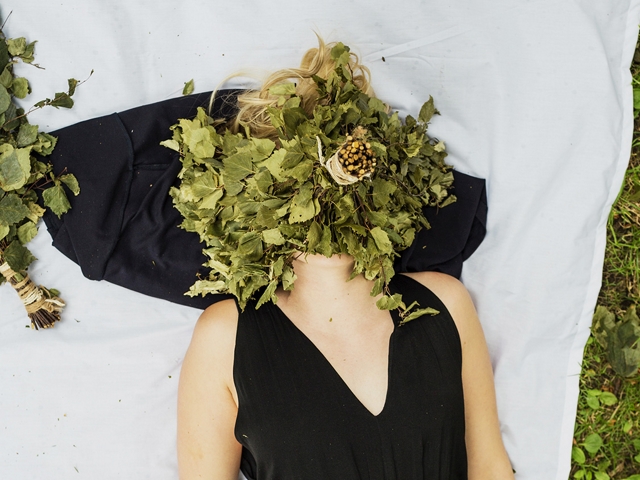Reflection of the rock in the water mirror surface created a spiritual portal to a higher, transcendent world, which presented itself “upturned” also in the belief world of some other natural cultures. A shaman, a witch, when going into a trance, could move unobstructed in this three-layer world safeguarded by their animal-shaped familiar or in its form.
Timo Miettinen & Heikki Willamo: Pyhät kuvat kalliossa, (Sacred images on the rock), 2007.
Self-awareness is often researched with the help of the mirror test developed by Gordon Gallup. A colour spot is placed on the face of an animal, or on any other area of the body the animal cannot normally see. Then the behaviour is observed in the front of the mirror; whether they tries to remove the spot or touches it, which would indicate that they perceives the reflected image as themselves. Many so-called intelligent species pass this test. Over fifty percent of human children generally pass this text at approximately 2 years of age. Com Scire questions the anthropocentric view on intelligence and consciousness.
Com Scire piece is based on the mirror test and self-awareness proven or unproven by it – as humans usually think of intelligence and awareness from the human-point-of view. While this project was realised, horses were not considered to qualify in the mirror test because being a quarry they are not supposed to be intelligent enough to pass it. Com Scire attempts to introduce the horse&human common mirror experience and seek into the naturescultural and spiritual narrative, where the mirror is thought to be representing the parallel reality and spiritual portal. What would you see in this parallel reality when looking at it together with a horse and imagining what the horses are experiencing?
The video was shot together with a horse herd at Perhekoti Toiska, in Koskenkorva, Ilmajoki, Finland. It was premiered in Kunsthalle Seinäjoki exhibition called ´What is it like to be an animal?’ 26.8.2020 – 9.1.2021. The exhibition was created in collaboration with 8 artists and ethologist Helena Telkänranta, inspired by her book. Please see also article of the piece in Research in Arts and Education journal, Together to Know: In search for Equus Spiritual Experience https://doi.org/10.54916/rae.126190
Warmest thanks for those who made this piece possible:
Leo, Jussi, Vormu, Harri, Fiira ja Roleksi, Keijo Viertoma, Teea Ekola, Tiina Tuominen, Jouko Rissanen and the Perhekoti Toiska staff,
Lyyti Keski-Korsu,
Juhani ja Aulikki Keski-Korsu,
Ada ja Laura Beloff, Erich Berger,
Ritva Räsänen,
Shachindra Dass,
Helena Telkänranta,
Kunsthalle Seinäjoki staff: Sanna Karimäki-Nuutinen, Pii Anttila, Elina Teitti, Miika Vainionkulma and Alan Bulfin.
Funded by The Arts Promotion Centre Finland, Kunsthalle Seinäjoki,
and Perhekoti Toiska.







